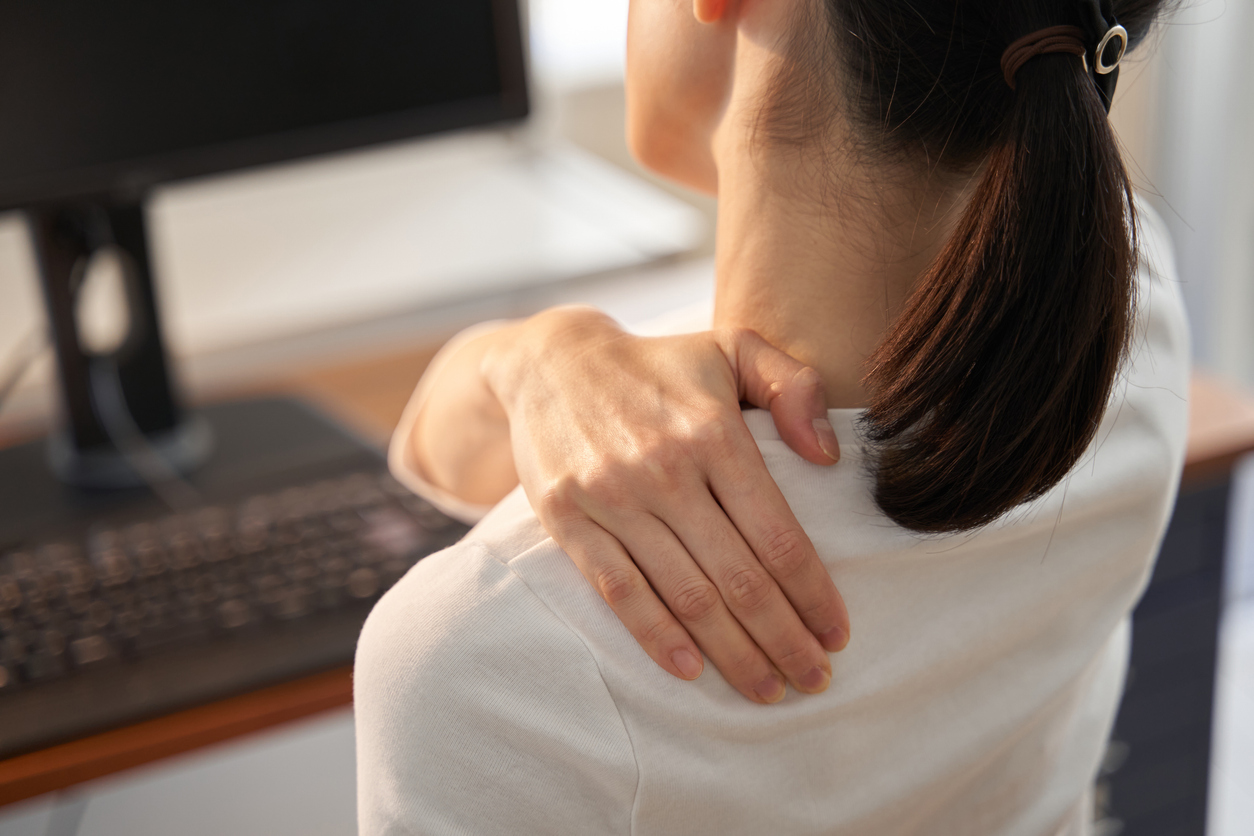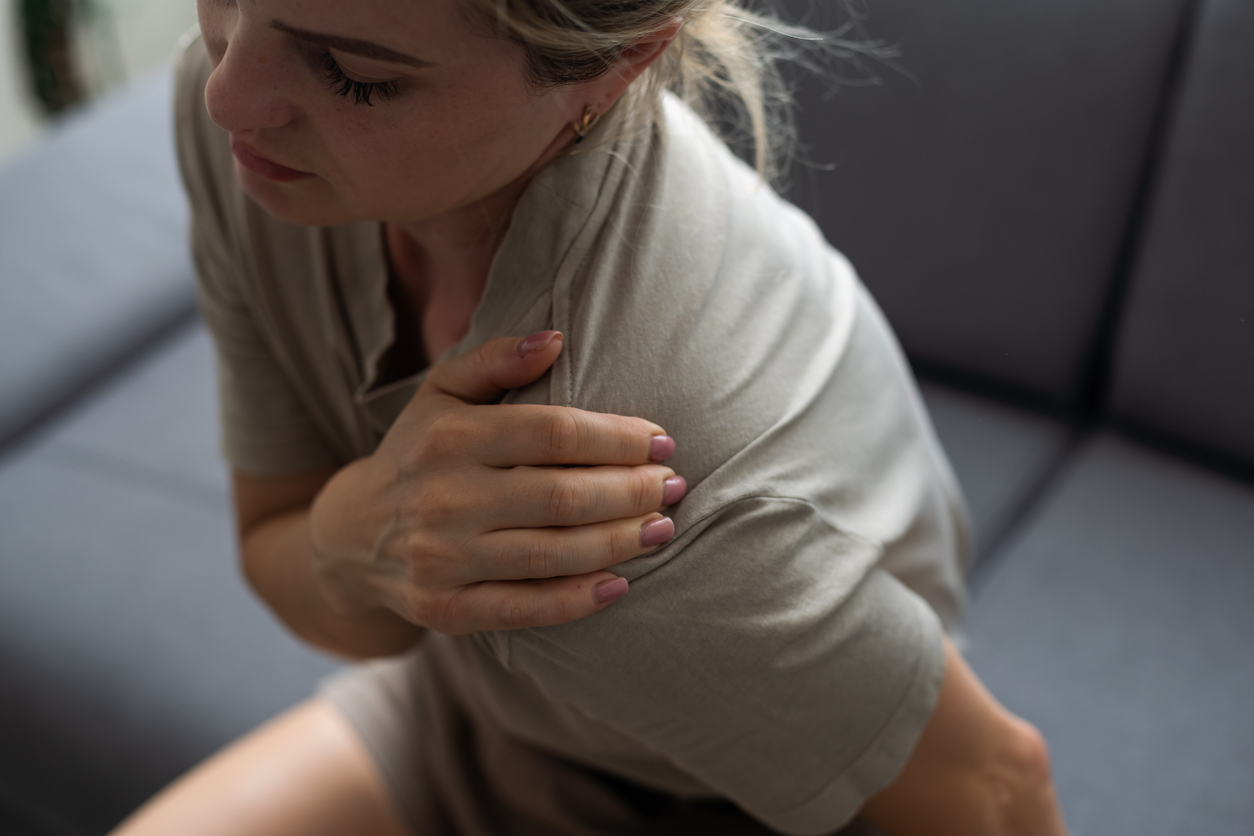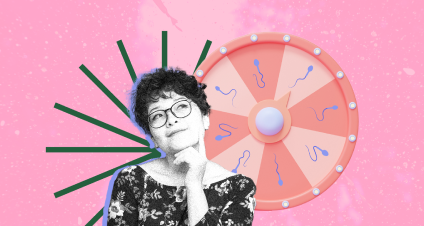If you're a Gen X or millennial woman in perimenopause or menopause suddenly struggling to lift your arm, put on a bra, or reach for a shelf without pain, you’re not alone. What feels like a bizarre, out-of-nowhere shoulder issue may actually be frozen shoulder, and yes, it can absolutely be connected to hormonal shifts during menopause. In fact, women aged 40 to 60 are disproportionately affected by frozen shoulder. Let’s break down why you may be experiencing a frozen shoulder, why your hormones are involved, and what to do about it.

Can menopause cause frozen shoulder?
Short answer: it’s unclear. The hormonal shifts during menopause can play a significant role in developing frozen shoulder, also known as adhesive capsulitis. Normally, your shoulder joint moves smoothly thanks to a lubricating fluid and a flexible capsule around the joint. But during menopause, estrogen levels decline, which can impact your joints, muscles, and connective tissues. They can become less elastic and more prone to inflammation and stiffness, resulting in shoulder discomfort, pain, and limited range of motion.
That said, the exact cause of frozen shoulder still isn’t fully understood, but menopause appears to be a common trigger for many women.
Can perimenopause cause frozen shoulder?
Much like menopause, the hormonal fluctuations during perimenopause, the transitional phase leading up to menopause, can also affect joint and tissue health. Estrogen levels fluctuate and gradually decline, which may increase the risk of developing frozen shoulder during this time. However, it’s important to note that perimenopause itself doesn’t directly cause frozen shoulder.
How long does a frozen shoulder last in menopause?
Although frozen shoulder is temporary, it can be frustratingly long-lasting. Recovery time varies from person to person, but the condition typically progresses in three stages:
- Freezing stage: Pain and increasing stiffness, lasting anywhere from 6 weeks to 9 months.
- Frozen stage: Increasing stiffness with less pain, lasting 4 to 6 months.
- Thawing stage: Gradual return of movement, with normal strength and range of motion returning between 6 months and 2 years.
That means it can take 1 to 3 years to fully resolve, though many women start to feel better earlier with the right care.

How to get rid of frozen shoulder in menopause
The key is gentle, consistent treatment that supports healing without aggravating inflammation. Here's what can help:
- Physical therapy: Targeted stretching and mobility exercises can improve range of motion.
- Pain support: Over-the-counter pain relievers can relieve discomfort.
- Corticosteroid injections: In more painful phases, a doctor may recommend these steroid injections to reduce inflammation.
Will taking estrogen help a frozen shoulder?
Currently, there’s no clinical evidence showing that hormone replacement therapy (HRT) effectively treats frozen shoulder in women. However, an animal study suggests that estrogen, especially through its interaction with estrogen receptor β, may help reduce fibrosis (the thickening and stiffening of tissue) in the shoulder joint capsule. This discovery offers promising insight into potential new treatments, particularly for postmenopausal women experiencing decreased estrogen levels.
It’s important to remember that these findings come from laboratory research, not clinical trials involving humans. IIf you’re considering HRT for other menopausal symptoms and also happen to be dealing with frozen shoulder, it’s worth discussing with your doctor.

What is the best position to sleep in with a frozen shoulder?
Sleeping with a frozen shoulder can be surprisingly difficult and painful. Finding the right position can make a big difference in how well you rest and how stiff you feel in the morning. Here are some sleep tips to ease the discomfort:
- Try sleeping on your back: This is often the most comfortable position. Place a pillow under your affected arm, either at your side or across your torso, to support the joint and prevent strain.
- If you're a side sleeper, avoid lying on the painful shoulder: Instead, sleep on your non-affected side with a pillow hugged against your chest. Tuck another small pillow under your sore arm to keep it slightly elevated and stable.
- Avoid sleeping directly on the affected shoulder: This can increase pressure, stiffness, and pain.
If you're having trouble sleeping and it's starting to affect your quality of life, consult a physical therapist. They can help you find the best sleeping position for your specific shoulder condition and may recommend supportive techniques or pillows to make nights more manageable.
What not to do for frozen shoulder
Here are some common mistakes to avoid:
-
Don’t push through the pain: Aggressive stretching or heavy workouts can worsen inflammation.
-
Don’t immobilize the shoulder completely: While rest is important, total lack of movement can lead to more stiffness.
-
Don’t ignore it: Hoping it goes away without intervention often leads to longer recovery times.
-
Don’t skip professional support: A good physical therapist can speed up your recovery.

Don’t ignore that shoulder pain
If you're dealing with frozen shoulder during menopause, it's not just a random midlife mystery, hormonal changes and age-related shifts in your body may be playing a role. The earlier you seek support, the better. Stay consistent with gentle movement, listen to your body, and don’t hesitate to explore treatment options that can improve your comfort, mobility, and overall quality of life.
Dahlia Rimmon is a freelance writer, editor, and registered dietitian. She writes for various publications and family-focused brands, covering everything from food and supplements to overall health and wellness. Her experience spans private practice, consulting, and working in the baby food industry. She lives in St. Louis with her family.









.webp)





.jpg)













